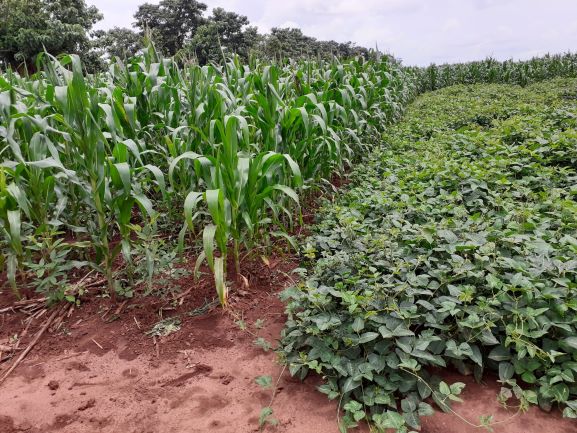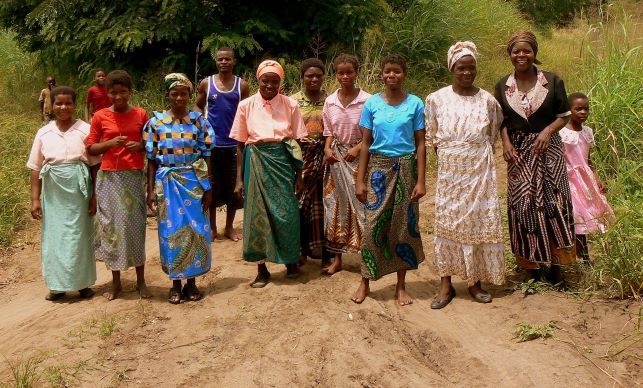By Professor Andy Dougill (@AndyDougill), Professor of Environmental Sustainability and Executive Dean of the Faculty of Environment, University of Leeds
Can conservation agriculture (CA) help farmers in sub-Saharan Africa build resilience to the problem of climate change? Professor Andy Dougill believes it is possible, but that more coordinated planning and coherent policy support across sectors nationally, on a district level, and to a range of local farmer groups and community leaders is needed.
For over a decade now, most development organisations have been advocating conservation agriculture as a ‘climate-smart agriculture’ approach. The idea behind conservation agriculture is that farmers maximise organic matter in their soil and reduce CO2 release by limiting or eliminating tillage, using crop rotations and by keeping a permanent organic coverage on the fields. In return, the argument goes, they get improved soils that are able to hold water for longer and sustain yields in dry years, making maize harvests more resilient to the impacts of climate change.
There is growing evidence globally to suggest that no-till farming works when good crop residue management practices are followed, but that local context remains critical, and further research insights, such as those being provided by the GCRF-AFRICAP project, are essential. Why is the evidence base still so poor, given that conservation agriculture – sometimes billed as ‘farming God’s way’ – has been promoted to farmers for so long?
Webinar on 23 Feb: Improving soil health through climate-smart agriculture
Learn more about AFRICAP’s research on Conservation Agriculture and soils science at our upcoming webinar on 23 Feb, ‘Improving soil health through climate-smart agriculture’. Visit the event page for full details and to register.
A threefold problem
Part of the problem is the patchy take up of conservation agriculture across countries such as Malawi, Zambia and Zimbabwe. Many farmers are reluctant to change to this method of farming or, once started, fail to maintain it after a donor-supported project leaves. The reasons for this are threefold: practical, cultural and institutional.

On the practical side, good conservation agriculture can be more labour intensive at certain times of the year, requiring more weeding and more work to prepare the ground and sow a crop. Leaving organic matter on the surface, such as maize stalks, can encourage pests such as mice, which are deterred when the stalks are burned. Because the benefits take a while to be seen and are largely evident only in drought years, farmers can easily be put off by more immediate changes in their farming practices.
Culturally, many farmers hold the view that conventional ploughing of land and creation of ridges and furrows is what epitomises good, modern farming. It is imperative that such views are questioned and that locally appropriate land management practices are discussed and supported by farmers, groups, community leaders and government extension services.
At an institutional level, take up of conservation agriculture is often incentivised through provision of additional fertiliser and new seed, which makes it hard to identify the impact of the change in farming method alone. Malawian studies have shown that when the incentives end, for the reasons above, farmers often revert to their former methods.
Mixed messages
Although conservation agriculture has been promoted for many years, this has been done by many different organisations – governmental and non-governmental – in various ways and for diverse reasons, resulting in confused messages as to why farmers should take up the practice and sometimes even what the practice should consist of.
Recent studies – conducted under auspices of the GCRF-AFRICAP project – looking at how policy on conservation agriculture is implemented in Malawi highlight the need for better communication and collaboration between all relevant parties within a country: government departments, local government and NGOs. Effective implementation of conservation agriculture requires government departments responsible for agriculture to move outside their traditional responsibilities and link with departments working on climate change adaptation, meteorology, health, and water distribution.
Given these limitations, what reliable evidence do we have of the benefits that conservation agriculture can bring, particularly in relation to climate resilience? A recent paper has shown that conservation agriculture improves soil structure and can increase organic carbon levels in soil aggregates leading to improved maize yields in drought years. However, most of this work has been undertaken on government research stations rather than in the ‘real world’ of smallholder farming systems. Furthermore, there is a lack of robust findings to determine whether these benefits will hold up in the face of climate change.
Climate resilience
We’ve been working with farmers in Malawi for the last 10 years and know many of those who have taken up conservation agriculture – currently around 2–3%. Those connections are helped us to run a fast-turnaround study, comparing how the crops of conservation agriculture farmers in Malawi survived the 2015/16 drought compared to those using conventional methods.

This work, funded by the UK government through the National Environment Research Council (NERC), can help us understand just how ‘climate-smart’ conservation agriculture can be. This research also looked at the impact of El Niño in Kenya, to assess whether conservation agriculture helped farmers retain yields in the face of the floods there. Interim results from Malawi indicate that, where the drought was most severe, all farmers lost their crops; however, in more marginal areas, conservation agriculture did provide benefits where household labour was available (linked to the effectiveness of village health services) and crop residue management had been possible for the last 5 years.
Research is starting to provide a much-needed evidence base to show farmers when it is in their interest to move to conservation agriculture. Farmers need a clear message to help them understand which practices will work best for them, so that they can make an informed decision. We need both the evidence and better collaborative working amongst key organisations at both a national and district level to make that happen. Ongoing studies in the GCRF-AFRICAP project and the future work of the Food Systems Research Network for Africa (FSNet-Africa) offer scope to provide further empirical insights on how land management can build climate resilience in African Agricultural Systems.
Webinar on 23 Feb
Learn more about AFRICAP’s research on Conservation Agriculture and soils science at our webinar on 23 February, ‘Improving soil health through climate-smart agriculture’. Visit the event page for full details and to register.
This blog and associated vlog is part of a joint campaign for World Food Day led by the ARUA-UKRI GCRF Food Systems Research Network for Africa (FSNet-Africa) in partnership with the Food, Agriculture, and Natural Resources Policy Analysis Network (FANRPAN), the University of Leeds’ Global Food and Environment Institute (GFEI), and the GCRF AFRICAP programme. Follow the campaign on Twitter @gcrfafricap, or visit our partners’ websites over the next two weeks – University of Pretoria, FANRPAN, and GFEI.
